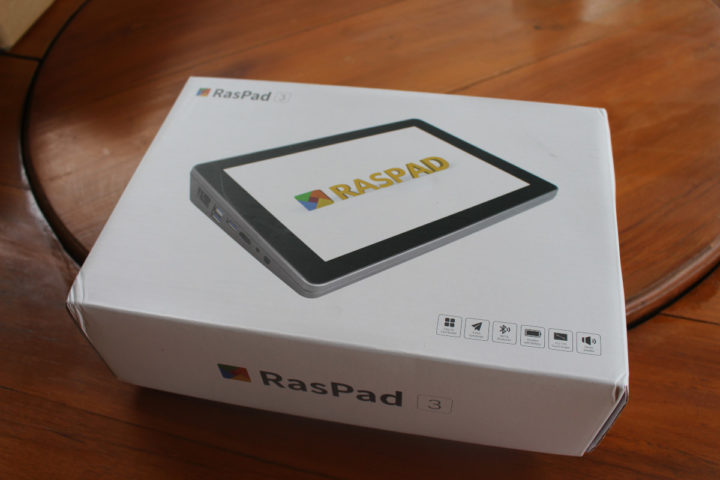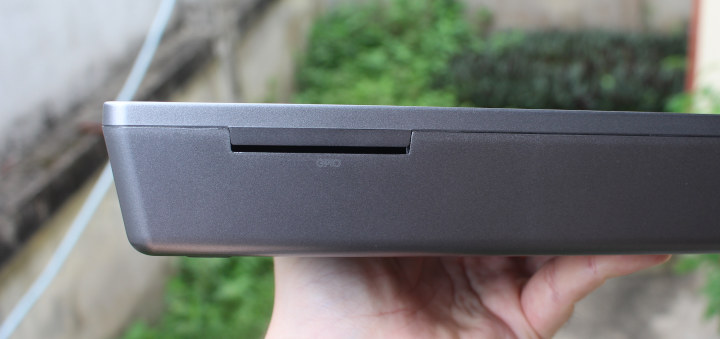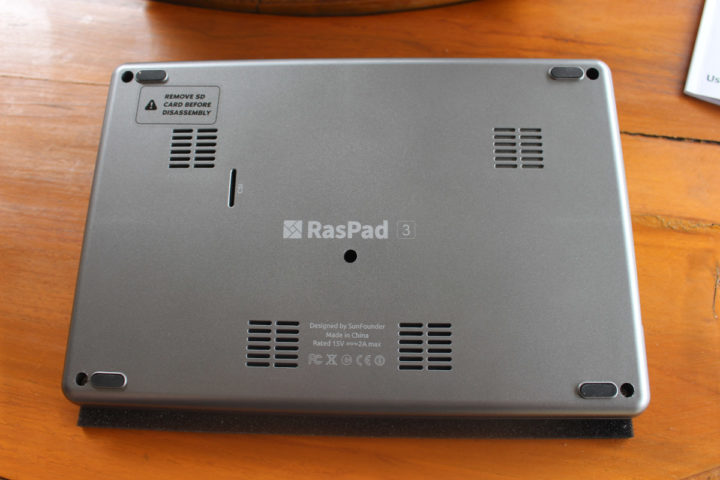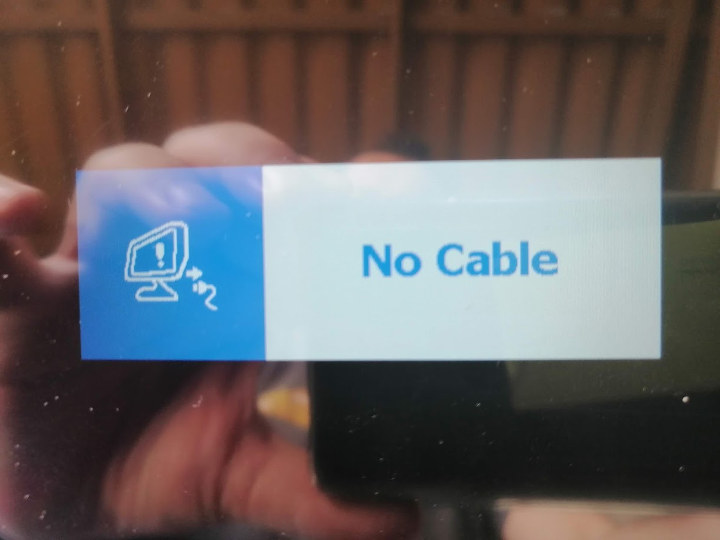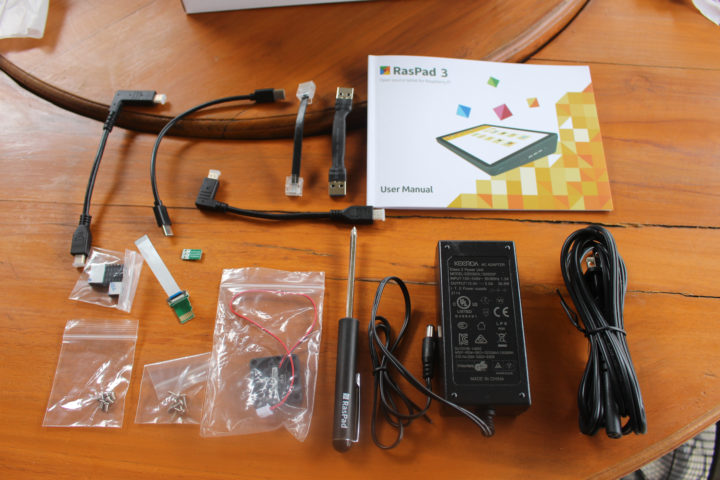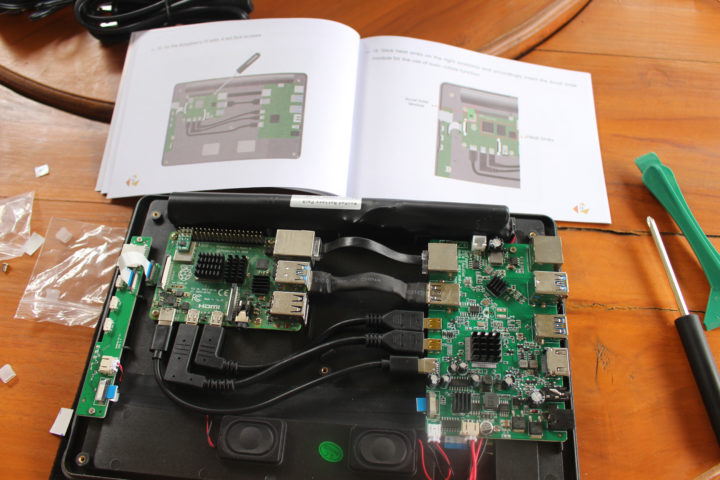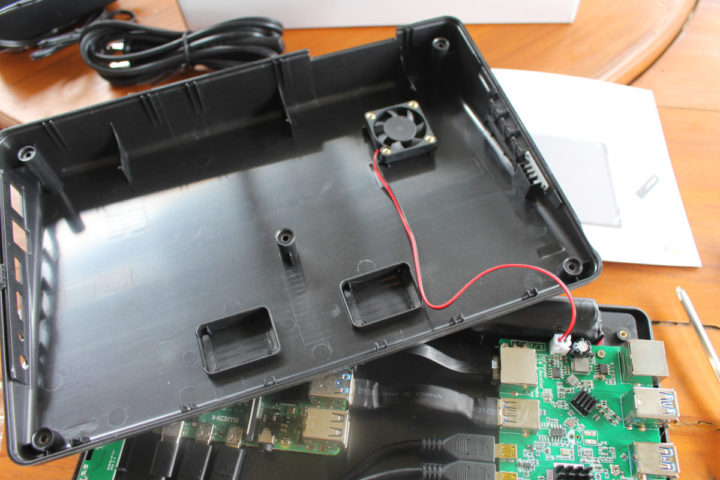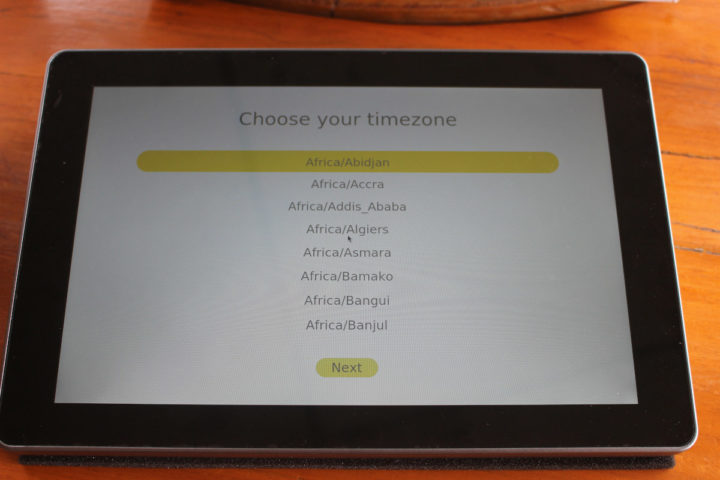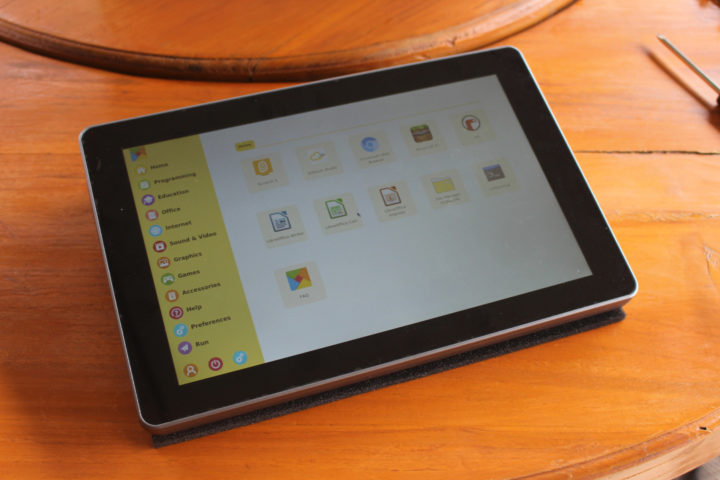RasPad tablet kit for Raspberry Pi 3B+ and other SBC’s was introduced in 2018, but Sunfounder has recently introduced an update, RasPad 3 that supports the more powerful Raspberry Pi 4 SBC.
After seeing my review of CrowPi2 Raspberry Pi 4 education laptop, the company asked me whether I’d be interested in reviewing Raspad 3 as well. So here we are, and I’ve received a sample of the tablet kit.
As usual, I’ll do a two-part review, with unboxing and assembly of the kit. Since I previously missed the RasPad 3 announcement, I’ll start by listing some of the specifications.
RasPad 3 specifications
- Compatible board – Raspberry Pi 4B with Broadcom BCM2711 quad-core Cortex-A72 processor, up to 8G RAM
- Storage – MicroSD card socket
- Display – 10.1-inch touchscreen IPS display with 1280×800 resolution, 10-point touch
- Video Output – Full-size HDMI output
- Audio – 3.5 mm headphone jack, stereo speaker
- Connectivity – Gigabit Ethernet RJ45 port, and 802.11b/g/n/ac WiFi 5 + Bluetooth 5.0 via wireless module on RPI 4 board
- USB – 3× USB 3.0 ports
- Misc – Power, Volume, Brightness buttons; accelerometer and gyroscope
- Power Supply – 15V/2A (30W) DC adapter to charge included battery (good for 3-5 hours)
- Dimensions – 260 x 170 x 49 mm
- Weight – 887.5 grams
On the software side, we’re being told the system runs RasPad OS with EzBlock Studio open-source platform for building electronic projects. We’ll check those in more detail in the second part of the review.
RasPad 3 Unboxing
If you’ve read the specs, you may think 49mm is a crazy thickness for a tablet, but this can easily be explained once we have an actual look at the “tablet”.
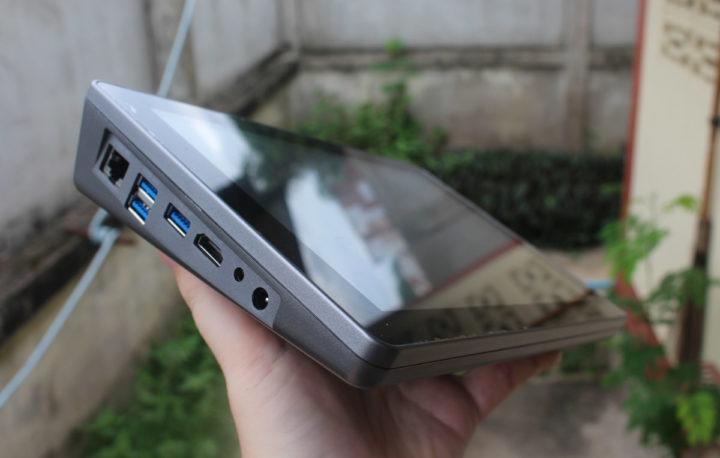
That side of RasPad 3 comes with Gigabit Ethernet, three USB 3.0 ports, a full HDMI port, a 3.5mm audio jack, and a DC jack, while the other side includes the 3 status LEDs, power, volume, and brightness buttons, and a MicroSD card slot.
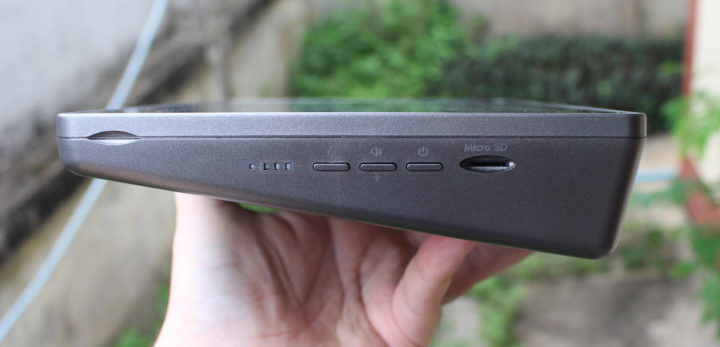
The bottom comes with a similar opening for the Raspberry Pi (CSI) camera, as well as some vents for cool and the speakers.
I assumed it would come as a pre-assembled system, but when pressed the power button, it said “No cable”.
Maybe time to check out the user manual and other accessories first…
Indeed, it’s a kit with internal cables with USB, Ethernet, HDMI, power, microSD card, some heatsinks, a cooling fan, screws, a screwdriver, plus the 15V/2A power supply and a user manual in English.
RasPad 3 tablet kit assembly
Time to open the enclosure. I just had to remove five screws on the bottom side and inserted a (green) plastic tool in the GPIO opening to separate the two parts of the enclosure.
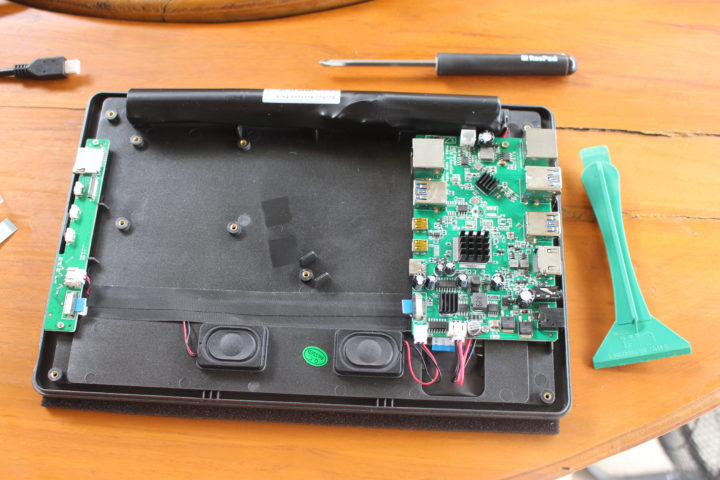
Let’s carry on with the assembly. You’ll have to bring your own Raspberry Pi 4 and MicroSD card since those are not included in the package.
From the top right to bottom left on the Raspberry Pi SBC, I had to insert the Ethernet cable, USB cable, Micro HDMI cables, and USB cable. There’s also the MicroSD ribbon cable on the left that needs to be inserted into the MicroSD card socket of the SBC, as well as the motion sensor board that we are asked to insert on the left side of the 40-pin GPIO header. There’s no motion of soldering it, but if you’re going to carry the tablet around a lot it might be a good idea to do so. Once everything is connected, we can keep the Raspberry Pi 4 in place by tightening it with four screws. The cables are somewhat rigid, and I had to push the board to the right a bit strongly to align the mounting holes with the threads.
The final step of the assembly is to install the fan and connect it to the mainboard. Once this is done we can close the enclosure, and we’re almost ready to get started.
Booting with Raspad OS
We still need to flash an operating system to a MicroSD card to be able to use the tablet. Sunfounder released RasPad OS v2.6 based on Raspberry Pi OS 32-bit with desktop released in August 2020. So that’s what we’ll use here and flash the image with USBImager.
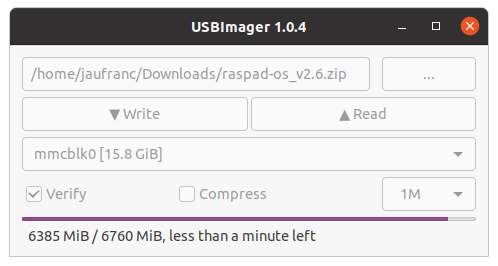
The next step is to select the language (only English or Chinese are available), before the system reboots, and enters RasPad OS user interface.
It just lists programs in a way that’s user-friendly to tablet users, so I’ll probably focus the second part of the review on the EzBlock Studio program for education.
I’d like to thanks Sunfounder for sending RasPad 3.0 for review. If you’d like to purchase the device, you can do so on Amazon or directly on RasPad website for $219 and up.
Continue reading: “RasPad 3 Review – Part 2: A Raspberry Pi 4 mini PC with integrated display“.

Jean-Luc started CNX Software in 2010 as a part-time endeavor, before quitting his job as a software engineering manager, and starting to write daily news, and reviews full time later in 2011.
Support CNX Software! Donate via cryptocurrencies, become a Patron on Patreon, or purchase goods on Amazon or Aliexpress


